ISO IS AT THE CENTRE OF A WORLDWIDE EFFORT TO REHABILITATE OUR PLANET.
ISO 14000 FAMILY
This year’s World Environment Day theme is “Reviving and Protecting Our Ecosystems,” and it marks the start of the United Nations decade on ecosystem restoration. With new standards and initiatives in the works, ISO is committed to leading the #generationrestoration movement.
Poverty, climate change, and extreme weather occurrences are just a few of the consequences of environmental degradation, and now is the moment to step up efforts to reverse this trend. Recognizing the importance of promoting biodiversity for ecosystem regeneration, ISO’s newly formed technical committee ISO/TC 331, Biodiversity, is actively developing standards to aid all types of organisations and governments in their efforts.
Standardized terms and definitions, impact analysis methodologies, frameworks for defining plans and strategies, recording and evaluating tools, and guidelines on specific biodiversity issues like ecological engineering and nature-based solutions and technologies are all part of the scope of work.
The International Union for Conservation of Nature (IUCN) is a liaison organisation on ISO’s biodiversity committee, and it has developed key global biodiversity standards such as the IUCN Red List Classifications and Criteria, the Global Standard for Identification of Key Biodiversity Areas, and the IUCN Nature-based Solutions Standard.
Dr. Thomas Brooks, IUCN Chief Scientist, remarked, “We are thrilled to cooperate with ISO to produce International Standards for biodiversity.”
“For the post-2020 Global Biodiversity Framework to succeed, the timing is critical.”
Sergio Mujica, the Secretary-General of the ISO, stressed that international cooperation is critical.
“Overexploitation of land and species has destroyed biodiversity, resulting in natural disasters and unequal food and water distribution around the world,” he said.
“While individual initiatives can help, multinational teamwork will make the biggest effect. ISO standards can help with this by offering agreed-upon working methods that organisations and governments around the world can use to help advance biodiversity issues up the political agenda.”
Restoring the ecosystem will also necessitate enormous investment, with estimates ranging in the trillions of dollars required to achieve our net-zero carbon targets. As a result, ISO has been working on a new set of standards to help the green finance industry become more secure, transparent, and effective.
ISO 14097, Greenhouse gases management and related activities – Framework which include legislation and regulations for evaluating and reporting investments and financing activities caused by climate change, was recently published, and it aids financiers in evaluating and reporting their actions, as well as determining the true value of their contribution to climate goals.
Other standards in the series, such as ISO 14030 for environmental performance evaluation of green debt instruments, ISO 14100, Green finance: Assessment of green financial projects, and ISO 14093, Mechanism for financing local adaptation to climate change: Performance-based climate resilience grants, are currently in development. Hundreds of ISO standards, such as ISO 14001 on environmental management systems, contribute to sustainable development and reducing our environmental effect. Organizations will be able to directly support all 17 Sustainable Development Goals (SDGs) of the United Nations, particularly SDG 13 (Climate Action), SDG 14 (Life Below Water), and SDG 15 (Education) (Life on Land).




